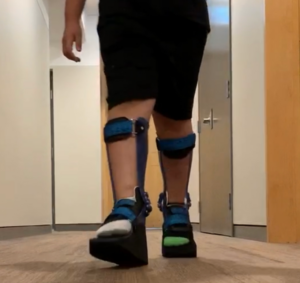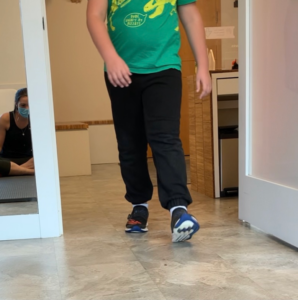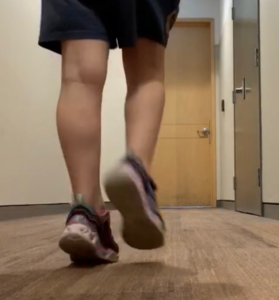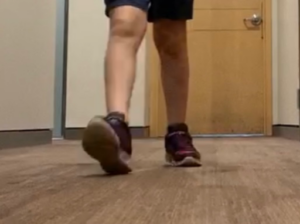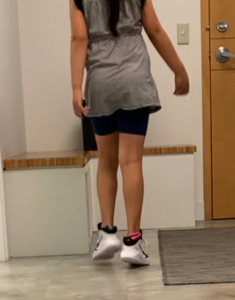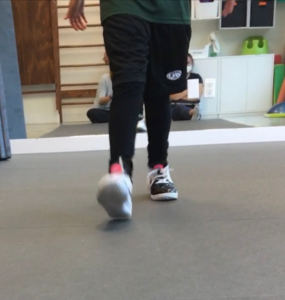A to Z but what about Pee !?
Summer holidays – one of the most awaited times of the year! Perhaps it involves a camping trip, or a summer slumber party. Whatever it is; it’s time for kids, and parents to relax, reset, and be stress free from the school year!
That is the case, unless you’re a kiddo (or a parent of a kiddo) with urinary incontinence. Summer holidays and fun, social plans can be absolutely terrifying.
How can I go on a camping trip if I pee my pants sometimes?
How will my child go to the birthday sleepover if they wet the bed some nights?
The most important thing to know is that wetting the bed, or clothing is not your fault, nor your kiddo’s fault. There are many things out there (including Paediatric Physio!) that can help kids decrease these occurrences, so keep smiling … we can help!
A second crucial thing to know, is that this is more common than you might imagine. The number of children and teens who struggle with continence is astounding, so it’s not just you and your kiddo. And want to know something else? It’s especially common in athletes! So you’re not alone! Helping your child realize that several kids in their class or on their sports teams also live with this can help them appreciate this more. Urinary leakage typically comes with a bunch of shame, guilt and fear. So try to let it go, and again…it’s not your fault!
There are a few definitions I’m going to go over so you can start to understand what may be going on with your situation:
Continuous incontinence – this is for kiddos who constantly leak in non-discrete amounts. This is something that you should see a doctor about, and is usually more of a “hardware” issue, than a “software” issue.
Intermittent Incontinence – this applies to kiddos who have specific, urinary leakage incidents. This can be daytime only, nighttime, only, or both. It can be for kiddos who are over the age of 5 who never achieved continence (primary), but also for kiddos who have previously attained bladder control (secondary). More specific categories include:
-
- Urge Incontinence: when a kiddo has a sudden or unexpected need to pee and can’t make it to the toilet in time.
- Stress Incontinence: when a kiddo has leakage with a specific activity such as coughing, sneezing, or laughing BUT ALSO during sports when you kick, run, or hop!
- Nighttime Incontinence: when a kiddo wets the bed at night
Who are the culprits ?!
Now you’re likely not going to believe this (as did I when I first heard it), but one of the main suspects of urinary incontinence is constipation! Let me explain…
When your rectum is full (even more so in little bodies), it pushes on the bladder and doesn’t allow it to fully fill. Furthermore, all that build up in the abdomen puts extra pressure on the “sensors” making it difficult to tell when it’s really time to go. Even pooping daily can mean constipation, so, everyone is assumed to be constipated until proven innocent!
Next on the suspect list are those sneaky pelvic floor muscles. These muscles sit in your pelvis and control the flow of pee and poop out of your body. Sometimes they can be weak, however they can also be tight and gripping, trying to hold everything in. When these muscles can’t contract properly, it causes constipation, poo stains in undies, itchy bums, pee dribbles and even those bigger leaks.
Other culprits can include things such as family history, life events (new sibling, divorce, illness/injury, etc), frequent urinary tract infections, early toilet training and sensory involvement.
Ta-Da! The solution:
- Say it, repeat it, believe it: It is not your fault. You are not alone 🙂
- Get yourself to a qualified physio who has extra training to treat the pelvic floor, but also who has experience working with kids. They will be able to assess the muscles (in a non-invasive way!!) as well as determine other culprits at play. Based on what they find, your paediatric physio can help you come up with a fun plan to becoming continent! CLICK HERE to book an appointment.
- It’s important to have a proactive health care team that is up to date with what’s going on. Knowledge is power and having a supportive team will help make the journey even easier!
For more information check out this cool video made by SickKids in Toronto for a great summary!
https://www.youtube.com/watch?v=E8Khck8lWak
If you want to schedule an appointment with our paediatric physio and pelvic floor trained physio CLICK HERE.
Written by: Karly Dagys, Physiotherapist

